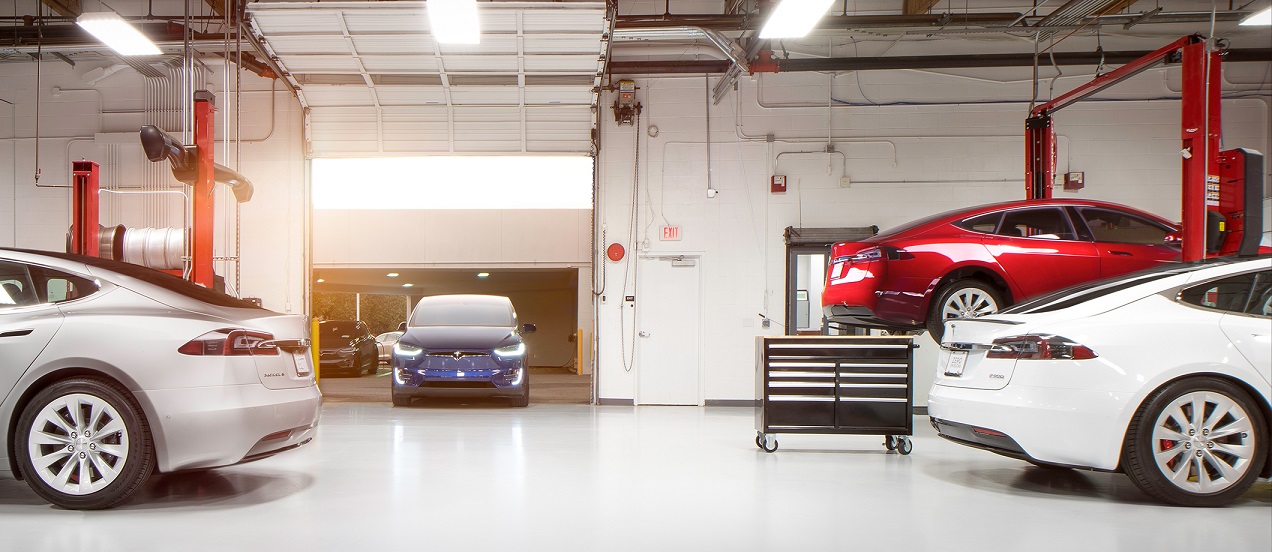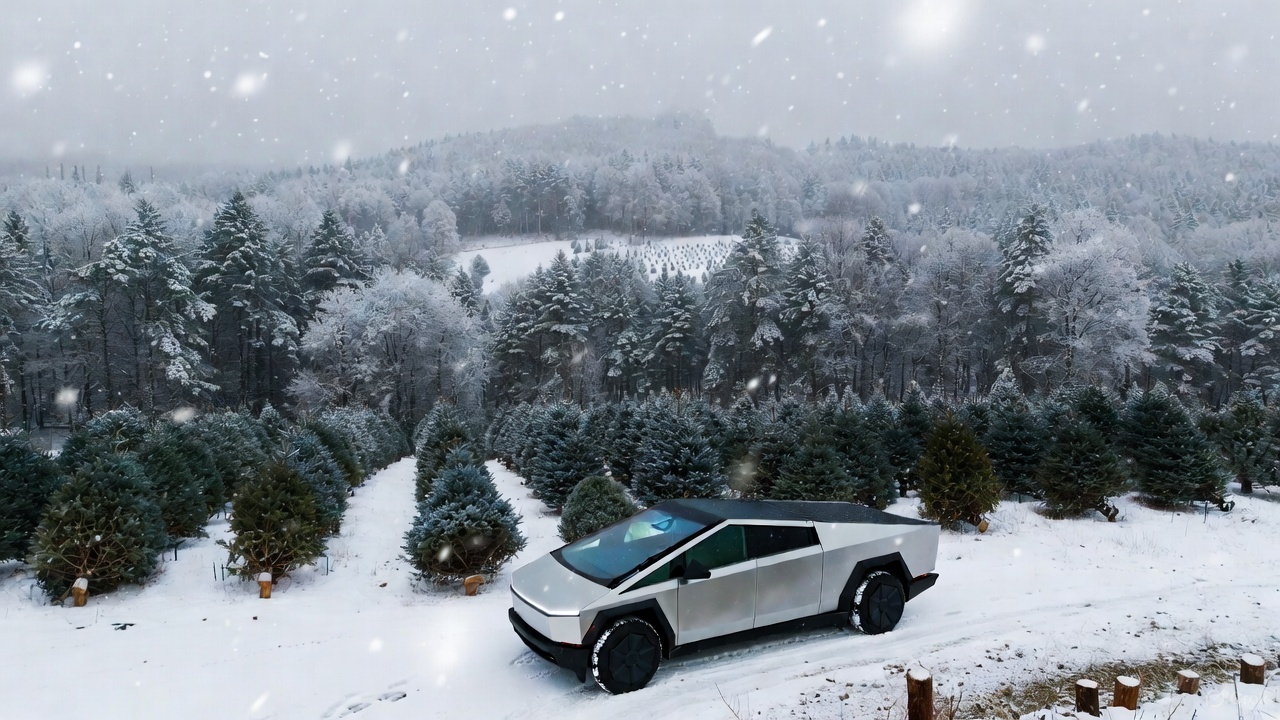

News
Tesla’s vehicle reliability makes way for as-needed service, no annual maintenance needed
Tesla will no longer be offering an extended maintenance plan in favor of specific service recommendations on an as-needed basis.
Having analyzed billions of miles of real-world driving data from its worldwide fleet of vehicles, combined with internal engineering studies on vehicle reliability, durability, and safety, the electric carmaker found that there was less of a need for customers to bring their vehicles in for annual service when, in many instances, the vehicle did not require maintenance like a traditional gasoline car would.
In place of an annual maintenance checklist, Tesla owners will only need to bring their cars in for service when there’s a service need on a specific component at a specific interval. This will enable cars to stay on roads for longer periods of time.
Along with reducing servicing requirements for Model S, Model 3, and Model X vehicles, this change will effectively end the purchase of optional 3 and 4-year Maintenance Plans.
The all-electric car maker originally recommended a multi-point inspection every 12 months or 12,500 miles, but long-term data has now demonstrated most of the items are unnecessary thanks to advantages to electric vehicles.
The annual scheduled maintenance previously recommended included a bumper to bumper, roof to wheel inspection. Vehicle logs and alerts were examined, consumables such as wiper blades, key fob batteries, and air filters were inspected, among other common vehicle inspection items.
Under Tesla’s maintenance recommendations, the following are now suggested:
- Cabin Air Filter
- High Efficiency Particulate Air (HEPA) Filter
- Tire Rotation, Balance and Wheel Alignment
- Brake Fluid Test
- Air Conditioning Service
- Winter Care
According to the Frequently Asked Questions section of Tesla’s Car Maintenance page:
Does my car require an annual maintenance service?
Your Tesla does not require annual maintenance and regular fluid changes. Please check your Owner’s Manual for latest maintenance recommendations for your Tesla.
Do I have to take my car to a Tesla Service Center?
With over-the-air software updates, remote diagnostics and the support of our Mobile Service technicians, the need to visit a Service Center is reduced. If your car does require service, you can schedule a service appointment in the Tesla app or your Tesla Account. If you choose to take your car to a non-Tesla shop for maintenance or repairs, coverage under your warranty could be affected if any problems occur.
Updating manufacturer maintenance recommendations with the customer in mind are one of the ways Tesla has demonstrated its commitment to improving its service experience. Owners have noted areas needing improvement in the electric vehicle manufacturer’s service recently, although their vehicles are well-loved in general.
Tesla has taken note of this weak spot and has been rolling out initiatives to improve its customer experience including opening in-house body shops and live status updates while their vehicles are being serviced. Similarly, because all of Tesla’s vehicles are connected, vehicle service logs are used to troubleshoot and identify customer concerns before a car is brought in for service.
As the $35,000 Model 3 Standard Range continues its roll out and the coming Model Y expected to be even more popular drawing near, shoring up the service side of Tesla’s ownership experience is a step in the right direction. Eliminating unnecessary check ups could have a positive impact on customer wait time thanks to freer service center schedules; regardless, keeping customers in their cars rather than waiting to be inside them is a good place to be overall.

Elon Musk
Starlink passes 9 million active customers just weeks after hitting 8 million
The milestone highlights the accelerating growth of Starlink, which has now been adding over 20,000 new users per day.

SpaceX’s Starlink satellite internet service has continued its rapid global expansion, surpassing 9 million active customers just weeks after crossing the 8 million mark.
The milestone highlights the accelerating growth of Starlink, which has now been adding over 20,000 new users per day.
9 million customers
In a post on X, SpaceX stated that Starlink now serves over 9 million active users across 155 countries, territories, and markets. The company reached 8 million customers in early November, meaning it added roughly 1 million subscribers in under seven weeks, or about 21,275 new users on average per day.
“Starlink is connecting more than 9M active customers with high-speed internet across 155 countries, territories, and many other markets,” Starlink wrote in a post on its official X account. SpaceX President Gwynne Shotwell also celebrated the milestone on X. “A huge thank you to all of our customers and congrats to the Starlink team for such an incredible product,” she wrote.
That growth rate reflects both rising demand for broadband in underserved regions and Starlink’s expanding satellite constellation, which now includes more than 9,000 low-Earth-orbit satellites designed to deliver high-speed, low-latency internet worldwide.
Starlink’s momentum
Starlink’s momentum has been building up. SpaceX reported 4.6 million Starlink customers in December 2024, followed by 7 million by August 2025, and 8 million customers in November. Independent data also suggests Starlink usage is rising sharply, with Cloudflare reporting that global web traffic from Starlink users more than doubled in 2025, as noted in an Insider report.
Starlink’s momentum is increasingly tied to SpaceX’s broader financial outlook. Elon Musk has said the satellite network is “by far” the company’s largest revenue driver, and reports suggest SpaceX may be positioning itself for an initial public offering as soon as next year, with valuations estimated as high as $1.5 trillion. Musk has also suggested in the past that Starlink could have its own IPO in the future.
News
NVIDIA Director of Robotics: Tesla FSD v14 is the first AI to pass the “Physical Turing Test”
After testing FSD v14, Fan stated that his experience with FSD felt magical at first, but it soon started to feel like a routine.

NVIDIA Director of Robotics Jim Fan has praised Tesla’s Full Self-Driving (Supervised) v14 as the first AI to pass what he described as a “Physical Turing Test.”
After testing FSD v14, Fan stated that his experience with FSD felt magical at first, but it soon started to feel like a routine. And just like smartphones today, removing it now would “actively hurt.”
Jim Fan’s hands-on FSD v14 impressions
Fan, a leading researcher in embodied AI who is currently solving Physical AI at NVIDIA and spearheading the company’s Project GR00T initiative, noted that he actually was late to the Tesla game. He was, however, one of the first to try out FSD v14.
“I was very late to own a Tesla but among the earliest to try out FSD v14. It’s perhaps the first time I experience an AI that passes the Physical Turing Test: after a long day at work, you press a button, lay back, and couldn’t tell if a neural net or a human drove you home,” Fan wrote in a post on X.
Fan added: “Despite knowing exactly how robot learning works, I still find it magical watching the steering wheel turn by itself. First it feels surreal, next it becomes routine. Then, like the smartphone, taking it away actively hurts. This is how humanity gets rewired and glued to god-like technologies.”
The Physical Turing Test
The original Turing Test was conceived by Alan Turing in 1950, and it was aimed at determining if a machine could exhibit behavior that is equivalent to or indistinguishable from a human. By focusing on text-based conversations, the original Turing Test set a high bar for natural language processing and machine learning.
This test has been passed by today’s large language models. However, the capability to converse in a humanlike manner is a completely different challenge from performing real-world problem-solving or physical interactions. Thus, Fan introduced the Physical Turing Test, which challenges AI systems to demonstrate intelligence through physical actions.
Based on Fan’s comments, Tesla has demonstrated these intelligent physical actions with FSD v14. Elon Musk agreed with the NVIDIA executive, stating in a post on X that with FSD v14, “you can sense the sentience maturing.” Musk also praised Tesla AI, calling it the best “real-world AI” today.
News
Tesla AI team burns the Christmas midnight oil by releasing FSD v14.2.2.1
The update was released just a day after FSD v14.2.2 started rolling out to customers.

Tesla is burning the midnight oil this Christmas, with the Tesla AI team quietly rolling out Full Self-Driving (Supervised) v14.2.2.1 just a day after FSD v14.2.2 started rolling out to customers.
Tesla owner shares insights on FSD v14.2.2.1
Longtime Tesla owner and FSD tester @BLKMDL3 shared some insights following several drives with FSD v14.2.2.1 in rainy Los Angeles conditions with standing water and faded lane lines. He reported zero steering hesitation or stutter, confident lane changes, and maneuvers executed with precision that evoked the performance of Tesla’s driverless Robotaxis in Austin.
Parking performance impressed, with most spots nailed perfectly, including tight, sharp turns, in single attempts without shaky steering. One minor offset happened only due to another vehicle that was parked over the line, which FSD accommodated by a few extra inches. In rain that typically erases road markings, FSD visualized lanes and turn lines better than humans, positioning itself flawlessly when entering new streets as well.
“Took it up a dark, wet, and twisty canyon road up and down the hill tonight and it went very well as to be expected. Stayed centered in the lane, kept speed well and gives a confidence inspiring steering feel where it handles these curvy roads better than the majority of human drivers,” the Tesla owner wrote in a post on X.
Tesla’s FSD v14.2.2 update
Just a day before FSD v14.2.2.1’s release, Tesla rolled out FSD v14.2.2, which was focused on smoother real-world performance, better obstacle awareness, and precise end-of-trip routing. According to the update’s release notes, FSD v14.2.2 upgrades the vision encoder neural network with higher resolution features, enhancing detection of emergency vehicles, road obstacles, and human gestures.
New Arrival Options also allowed users to select preferred drop-off styles, such as Parking Lot, Street, Driveway, Parking Garage, or Curbside, with the navigation pin automatically adjusting to the ideal spot. Other refinements include pulling over for emergency vehicles, real-time vision-based detours for blocked roads, improved gate and debris handling, and Speed Profiles for customized driving styles.








